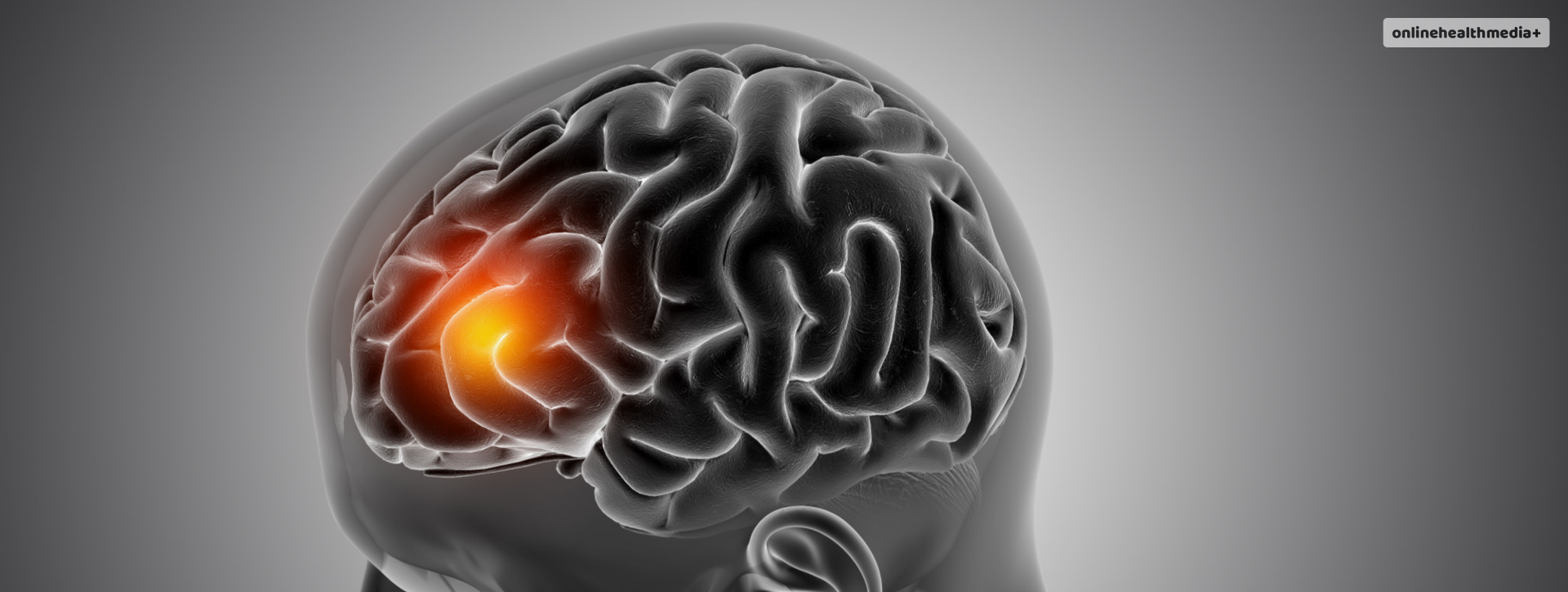What Is A Brain Tumor? Answered: 6 Primary Signs That You Should Watch Out For!
Asking, What is a brain tumor? You’ve found just the right article! A brain tumor is an abnormal growth of cells within the brain or the central nervous system (CNS).
It can develop from various cell types, including glial cells (such as astrocytes, oligodendrocytes, and ependymal cells) and neuronal cells.
Brain tumors can be benign (non-cancerous) or malignant (cancerous). Moreover, they can arise from different brain or spinal cord regions.
The following article responds to the question while providing information on the causes, risk factors, and more. Read on until the end to know about the supportive care patients can provide.
Contents
What Is A Brain Tumor And What Are Its Types

Answering what is a brain tumor requires defining the overgrowth. A brain tumor results from uncontrolled growth of cells in the brain.
These may also be present near the area. The brain tumor may be benign or malignant, depending on the cell types and how rapidly they grow.
- Primary Brain Tumors: These tumors originate within the brain or CNS tissue and can be further classified based on their cell of origin and location. Common types of primary brain tumors include gliomas (such as glioblastoma multiforme, astrocytoma, and oligodendroglioma), meningiomas, pituitary adenomas, and ependymomas.
- Metastatic Brain Tumors: Also known as secondary brain tumors, these tumors originate from cancer cells that have spread (metastasized) from primary tumors elsewhere in the body, such as the lungs, breast, colon, or skin. Metastatic brain tumors are more common than primary brain tumors and tend to occur in multiple locations within the brain.
Causes and Risk Factors
Addressing what is a brain tumor also includes knowing the risk factors and causes. The exact cause of most primary brain tumors is unknown. But several factors may increase the risk of developing a brain tumor, including:
– Genetic predisposition: Certain genetic syndromes, such as neurofibromatosis, Li-Fraumeni syndrome, and tuberous sclerosis, may predispose individuals to the development of brain tumors.
– Exposure to radiation: Previous exposure to ionizing radiation, whether from radiation therapy for other cancers or environmental sources, may increase the risk of developing certain types of brain tumors.
– Family history: A family history of brain tumors or certain genetic conditions may increase an individual’s risk of developing a brain tumor.
– Age: While brain tumors can occur at any age, they are more common in older adults, with certain types of tumors, such as gliomas, occurring more frequently in middle-aged and older individuals.
What Is A Brain Tumor: Symptoms Of Brain Tumor

The symptoms of a brain tumor can vary depending on the size, location, and growth rate of the tumor. Common symptoms may include:
– Headaches: Persistent or progressively worsening headaches, often accompanied by other symptoms such as nausea, vomiting, or vision changes.
– Seizures: Seizures, which may occur suddenly and without warning, may be focal (affecting one specific body area) or generalized (affecting both sides).
– Cognitive changes: Changes in cognitive function, such as memory problems, difficulty concentrating, or changes in behavior or personality.
– Motor deficits: Weakness, numbness, paralysis in one or more limbs, difficulty walking or balancing, and coordination problems.
– Sensory changes: Changes in sensory perception, such as blurred vision, double vision, hearing loss, or altered sensation in the face or limbs.
– Speech difficulties: Difficulty speaking, slurred speech, or language comprehension or expression changes.
How Is Brain Tumor Diagnosed?

What is a brain tumor, and how is it diagnosed are important questions. Diagnosing a brain tumor typically involves a combination of a medical history review, physical examination, neurological assessment, and diagnostic imaging studies. Common diagnostic tests may include:
– Neurological examination: A thorough neurological evaluation assesses cognitive function, motor skills, sensory perception, reflexes, and coordination.
– Imaging studies: Magnetic resonance imaging (MRI) or computed tomography (CT) scans are used to visualize the brain and identify the tumor’s location, size, and characteristics.
– Biopsy: A biopsy may be performed to obtain a tumor tissue sample for microscopic examination and analysis to determine its type, grade, and genetic characteristics.
– Additional tests: Additional tests, such as cerebrospinal fluid analysis, genetic testing, or functional imaging studies, may be performed to further characterize the tumor and guide treatment decisions.
What Is A Brain Tumor Treatment
Treatment for a brain tumor depends on several factors, including the type, location, size, and grade of the tumor. As well as the individual’s overall health and treatment preferences. Treatment options may include:
– Surgery: Surgical removal of the tumor, either partially or completely, may be performed to relieve symptoms, reduce tumor size, and improve overall survival.
– Radiation therapy: External beam radiation therapy or stereotactic radiosurgery may be used to deliver targeted radiation to the tumor, either as a primary treatment or as adjuvant therapy following surgery.
– Chemotherapy: Chemotherapy drugs may be administered orally or intravenously to kill cancer cells, shrink tumors, or prevent a recurrence.
– Targeted therapy: Targeted therapy drugs, specifically targeting genetic mutations or molecular pathways involved in tumor growth, may treat certain types of brain tumors.
– Immunotherapy: Immunotherapy drugs, which harness the body’s immune system to recognize and attack cancer cells, are being investigated as a potential treatment option for certain brain tumors.
Prognosis
The prognosis for individuals with a brain tumor varies widely. This depends on factors such as the tumor’s type, location, size, and grade. Including the individual’s age, overall health, and response to treatment.
Some brain tumors, such as benign meningiomas or low-grade gliomas, may have a more favorable prognosis with appropriate treatment.
Meanwhile, others, such as glioblastoma multiforme, are associated with a poorer prognosis and shorter survival rates.
Risk Reduction and Prevention

The exact cause of most brain tumors remains unknown. However, there are steps individuals can take to reduce their risk of developing a brain tumor.
– Avoiding exposure to environmental toxins: Minimizing exposure to environmental toxins, such as pesticides, solvents, and industrial chemicals, may reduce the risk of developing certain types of brain tumors.
– Protecting against head trauma: Taking precautions to prevent head injuries, such as wearing helmets during sports activities and using seat belts in motor vehicles, can help reduce the risk of traumatic brain injury and associated brain tumors.
– Healthy lifestyle habits: Adopting a healthy lifestyle, including maintaining a balanced diet, engaging in regular physical exercise, managing stress, and avoiding tobacco and excessive alcohol consumption, may support overall brain health and reduce the risk of developing brain tumors.
– Regular medical check-ups: Regular medical check-ups and screenings can help detect underlying health conditions or risk factors that may increase the risk of developing brain tumors, allowing for early intervention and treatment.
Support Services and Resources
What is a brain tumor support for patients? Living with a brain tumor can be challenging, both for individuals diagnosed with the condition and their caregivers.
Providing information and resources on support services, advocacy organizations, and community resources can help individuals. Including families navigating the challenges associated with a brain tumor diagnosis.
These resources may include:
– Support groups: Peer-led support groups provide opportunities for individuals affected by brain tumors to connect with others facing similar challenges, share experiences, and receive emotional support and encouragement.
– Counseling and therapy: Professional counseling services, such as individual or family therapy, can help individuals and families cope with the emotional, psychological, and practical aspects of living with a brain tumor.
– Educational materials: Access to reliable and up-to-date educational materials, such as books, websites, and online forums, can empower individuals and families with knowledge and information about brain tumors, treatment options, and supportive care resources.
– Financial assistance: Financial assistance programs, patient advocacy organizations, and social service agencies may offer support with medical expenses, transportation costs, and other financial challenges associated with a brain tumor diagnosis and treatment.
Emerging Research and Advances
Highlighting ongoing research efforts and recent advances in brain tumor research can provide hope for improved treatment options. Additionally, outcomes in the future. Areas of research may include:
– Precision medicine: Advances in genomic sequencing and molecular profiling techniques enable researchers to identify specific genetic mutations and molecular pathways involved in the development and progression of brain tumors, paving the way for personalized treatment approaches and targeted therapies.
– Immunotherapy: Immunotherapy approaches, such as immune checkpoint inhibitors, chimeric antigen receptor (CAR) T-cell therapy, and cancer vaccines, are being investigated as potential treatment options for brain tumors. Harnessing the body’s immune system to recognize and eliminate cancer cells.
– Novel treatment modalities: Researchers are exploring innovative treatment modalities for brain tumors, including oncolytic viruses, nanoparticle-based drug delivery systems, and gene therapy techniques, to improve drug delivery, enhance treatment efficacy, and overcome resistance mechanisms.
Treatment Advances in Brain Tumors

Recent advancements in the treatment of brain tumors have revolutionized the approach to managing these complex and challenging conditions.
These innovative therapies offer new hope for patients and are reshaping the landscape of brain tumor treatment:
- Targeted Therapies: Targeted therapies have emerged as a promising approach for treating brain tumors by specifically targeting molecular pathways or genetic alterations driving tumor growth. Drugs such as bevacizumab (Avastin) target angiogenesis, disrupting the formation of new blood vessels that supply nutrients to the tumor.
Other targeted agents, such as tyrosine kinase inhibitors and monoclonal antibodies. Aim to block specific signaling pathways implicated in tumor progression.
- Immunotherapy: Immunotherapy has shown remarkable potential in treating brain tumors by harnessing the power of the immune system to recognize and attack cancer cells. Immune checkpoint inhibitors, such as pembrolizumab (Keytruda) and nivolumab (Opdivo), release the brakes on the immune response. This enables T cells to target and destroy tumor cells.
CAR T-cell therapy involves genetically modifying a patient’s immune cells to recognize. And eliminate cancer cells. This offers a personalized and targeted treatment approach.
- Radiation Techniques: Advances in radiation therapy techniques have improved the precision and effectiveness of treatment while minimizing damage to surrounding healthy tissue. Stereotactic radiosurgery delivers highly focused radiation beams to target tumors with submillimeter accuracy. This makes it suitable for treating small or deep-seated tumors.
Proton therapy delivers radiation using charged particles, allowing for precise targeting of tumors. Meanwhile, sparing nearby critical structures reduces the risk of long-term side effects.
- Surgical Innovations: Neurosurgical techniques have evolved to allow for more precise and minimally invasive tumor removal, resulting in improved outcomes and reduced patient morbidity.
Intraoperative imaging technologies, such as intraoperative MRI and fluorescence-guided surgery, provide real-time visualization of tumor margins. Thus, enabling surgeons to achieve maximal tumor resection while preserving critical brain structures.
Awake brain surgery allows patients to remain awake and responsive during surgery. Allowing neurosurgeons to map critical brain functional areas and minimize postoperative deficits.
Supportive Care for Brain Tumor Patients

In addition to advancements in treatment, comprehensive supportive care is essential for addressing the patient’s needs. Patients have physical, emotional, and psychosocial needs throughout their journey. This is how it is achieved:
- Palliative Care: Palliative care focuses on improving the quality of life for patients with serious illnesses, including brain tumors, by managing symptoms, alleviating pain, and addressing psychosocial and spiritual concerns.
Palliative care teams collaborate with patients, families, and other healthcare providers. Resulting in holistic and compassionate care that aligns with the patient’s goals and preferences.
- Symptom Management: Symptom management is a key component of supportive care for brain tumor patients and may involve pharmacological and non-pharmacological interventions to address a wide range of symptoms, including pain, nausea, fatigue, cognitive impairment, and mood disturbances.
Multidisciplinary teams collaborate, including physicians, nurses, psychologists, and rehabilitation therapists. They collectively develop personalized symptom management plans tailored to each patient’s individual needs.
- Rehabilitation Services: Rehabilitation services play a critical role in helping brain tumor patients regain function, independence, and quality of life following treatment. Physical, occupational, speech, and cognitive rehabilitation programs are tailored.
They address specific deficits and functional limitations, such as mobility impairments, weakness, speech difficulties, and cognitive challenges. These therapies maximize recovery, optimize functional outcomes, and promote overall patient well-being.
- End-of-Life Care: End-of-life care encompasses a range of supportive services and interventions designed to ensure comfort, dignity, and quality of life for patients with advanced or terminal brain tumors. Hospice care provides comprehensive medical, emotional, and spiritual support for patients. and families facing the end of life.
It focuses on symptom management, pain relief, and psychosocial support. Bereavement support services offer counseling and assistance to families.
Also, includes caregivers coping with grief and loss following the death of a loved one.
Integrating these treatment advances and supportive care measures into managing brain tumors will optimize outcomes. Additionally, it will improve the overall quality of life for patients affected by the condition.
Conclusion
In conclusion, a brain tumor is an abnormal growth of cells within the brain. It may also be in the central nervous system that can arise from various cell types. It also has diverse clinical presentations. The exact cause of most brain tumors is unknown.
However, several risk factors may increase an individual’s susceptibility to developing a brain tumor.
Early recognition and diagnosis of brain tumors are essential for prompt intervention and treatment to improve outcomes.
Additionally, it improves the quality of life for affected individuals. Advances in diagnostic techniques, treatment modalities, and supportive care continue to evolve. These offer hope for improved outcomes and survival for individuals living with brain tumors.
Let us know in the comments below if you have any questions for us!
Also read
- Tips Every Aspiring Nurse Should Know.
- 5 Tips to Take Care of Your Sensitive Skin.
- What Is Red Light Therapy & What Are Its Main Benefits?



